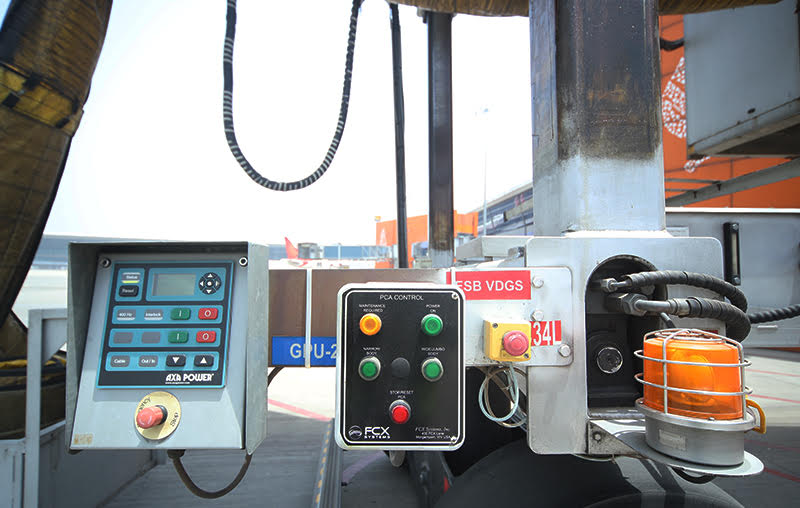
In recent years, the aviation industry has been under increasing pressure to reduce its environmental footprint and improve operational efficiency. One area that has shown significant promise in addressing both these challenges is the adoption of electric Ground Support Equipment (GSE) at airports worldwide. This article explores the multifaceted impact of electric GSE on airport sustainability and efficiency, highlighting the benefits, challenges and future prospects of this transformative technology.
Ground Support Equipment encompasses a wide range of vehicles and machinery used to service aircraft between flights. This includes baggage tractors, belt loaders, pushback tugs, water carts, lavatory collection tugs, Air starter units, ground power units and air conditioning units, among others. Traditionally, these machines have been powered by diesel or gasoline engines, contributing significantly to airport emissions and noise pollution.
The transition to electric GSE represents a paradigm shift in airport operations. This move is driven by several factors:
The adoption of electric GSE has a profound impact on airport sustainability:
Electric GSE produces zero direct emissions, significantly reducing an airport's carbon footprint. A study by the International Civil Aviation Organization (ICAO) estimated that full electrification of GSE could reduce airport ground emissions significantly for a large airport.
By eliminating exhaust emissions, electric GSE contributes to better air quality in and around airports, benefiting both workers and nearby communities.
Electric motors are significantly quieter than their internal combustion counterparts, reducing noise pollution and improving the working environment for ground staff.
Electric motors are inherently more energy-efficient than internal combustion engines, converting a higher percentage of energy into useful work.
The FEGP & electric PCA units eliminates, the requirement of additional towing equipment thus reducing the vehicular traffic at ramp.
The benefits of electric GSE extend beyond environmental considerations:
Electric GSE often provides superior torque characteristics, enabling faster acceleration and improved performance in tasks like aircraft pushback.
Electric motors have fewer moving parts compared to internal combustion engines, potentially leading to reduced maintenance requirements and downtime.
While initial investment in electric GSE can be higher, the total cost of ownership is often lower due to reduced fuel costs and maintenance expenses. Some airports report up to 80% reduction in energy costs for electric GSE compared to diesel equivalents.
Electric GSE is less susceptible to cold-start issues and performs consistently across a wide range of temperatures, enhancing reliability in various climatic conditions.
Despite its benefits, the transition to electric GSE is not without challenges:
1. Initial Costs: The upfront investment for electric GSE and associated charging infrastructure can be substantial.
2. Charging Infrastructure: Airports need to implement robust charging systems to support a fleet of electric GSE, which may require significant planning and investment.
3. Battery Life and Performance: While improving, concerns remain about battery life, especially in extreme weather conditions and the time required for charging.
4. Grid Capacity: Large-scale adoption of electric GSE may require upgrades to an airport's electrical infrastructure to handle increased power demand.
5. Training and Adaptation: Staff need to be trained to operate and maintain new electric equipment effectively.
The future of electric GSE looks promising, with several trends emerging:
Improved Battery Technology: Advancements in battery technology are expected to increase range, reduce charging times and lower costs.
Smart Charging Systems: Implementation of intelligent charging systems will optimize power usage and reduce strain on the grid.
Vehicle-to-Grid (V2G) Technology: Future electric GSE could potentially serve as mobile power banks, providing power back to the grid during peak demand periods.
Autonomous Electric GSE: The combination of electrification and automation could further enhance efficiency and safety in airport ground operations.
The adoption of electric Ground Support Equipment represents a significant step forward in improving airport sustainability and efficiency. While challenges remain, the benefits in terms of reduced emissions, improved air quality, noise reduction and potential cost savings make it an attractive option for airports worldwide. As technology continues to advance and regulatory pressures increase, the transition to electric GSE is likely to accelerate, playing a crucial role in the aviation industry's journey towards a more sustainable future.
If you need any services, drop us a mail at Rohitkumar.Singh@gmrgroup.in or get in touch with us at +919717199753.